John Hurrell – 20 May, 2016
If there is a cluster of uniting themes it is that of social change, injustice, and poetry. And although there is a fair amount of expected horror to do with repressive regimes, there are also surprising fillips of whimsical humour, creative metaphor, pungent defiance and colourful exuberance. It makes the implication that most of all, to be an artist on this continent is to be political.
Auckland
International group show
Space to Dream: Recent Art from South America
Curated by Beatriz Bustos Oyanedel and Zara Stanhope
7 May - 18 September 2016
In this sprawling and energetic exhibition of contemporary art from Chile, Brazil, Argentina, Colombia, Uruguay, Paraguay, Ecuador and Bolivia - work made from the 1960s on and countries listed here in descending order of artist participants - the displays start in long narrow corridors and slowly move into more spacious rooms as you slowly advance across the second from the top floor.
Dynamically varied in mood, media and content this presentation was initiated by Auckland Art Gallery with support from a wide range of partners such as the Gallery Patrons, AUT, Air New Zealand, the Ministry of Foreign Affairs and Trade, various New Zealand and South American art and educational institutions, and is an unquestionable success. With 44 artists, it is full of exhilarating surprises.
If there is a cluster of uniting themes it is that of social change, injustice, and poetry. And although there is a fair amount of expected horror to do with repressive regimes, there are also surprising fillips of whimsical humour, creative metaphor, pungent defiance and colourful exuberance. It makes the implication that most of all, to be an artist on this continent is to be political. This is mixed with a sense that these artists are indifferent to regional nationalism involving individual countries, for in their biographies they seem to move around from country to country - and pride themselves on being South American rather than frenzied local flag wavers.
There is a hidden heart to this show, a poorly signposted viewing room for a delicious suite of seven continually running short films - that once discovered - gets you to seek out the other short films scattered throughout the floorplan, and then to examine closely the other more overtly compelling static displays nearby.
Four films in particular are amazing. Two of them involve the Brazilian videomaker Cinthia Marcelle.
Her nine minute Cruzada /Crusade (2010) (click on name) shows a country crossroads from high up, a right-angled intersection where four roads meet. Using music, it comically plays on opposites where first four yellow-shirted marching cymbalists arrive on one side, then four red-shirted drummers on the other who force the cymbal players to back off and then return. The same thing again occurs with four blue-shirted trombonists and then four green-shirted sousaphone players: advance and retreat as in military tactics. Next there is a sequence of complicated manoeuvres where the four types of brassband player intermingle, rotate in formation and then separate to reform in their original lines - before departing in order. The choreography and humour is absolutely engrossing.
In her other work, O Século /The Century (2011), made with Tiago Matta Machado, an empty courtyard is used as a space for the tossing of a vast range of projectiles, such as fluorescent tubes, oil drums, clothing, tubular chairs, crates, inflated inner tubes, bike wheels, construction site helmets, flung dirt and clouds of smoke: first of all from the right, and then flipped over to come from the left. The throwers are hidden and high up, and usually you see the movement of the shadow first and a blur of the flying object, before it loudly hits the ground. The title seems set up to provide a metaphorical backdrop for political movements and perhaps their violent consequences in the twentieth century.
Another fascinating movie, Primeras Palabras (First Words), 2014, looks at language, its spelling and the semiotic structure of letters - via choreographic bodily formations. Catalina Bauer and Amelia Ibáñez - with a classroom as backdrop - position their bodies into letter shapes after groups of letters are written on a blackboard. The choreography follows in profile, with a sequence of semaphores which sometimes flow into further letters as a variety of supple and rhythmical dance.
The Paraguayan artist Joaquin Sánchez, hitherto unknown in Aotearoa, has a high profile in this exhibition, presenting on a very large canvas a screened portrait of a Guaraní indigene with an embroidered heart glued over his chest - the heart alluding to the Spanish lace made by the Guariní, and his name (Chaco) referencing the 1932-35 war between Bolivia and Paraguay. The Guaraní have been deliberately not having families, calculatedly ‘euthanizing’ in the face of the disastrous effects of colonialism, while in the gallery the embroidered heart on the canvas will pointedly last longer than the more unstable screened photograph.
Sánchez has also contributed three remarkable films, with one telling the story of Margarita, a maid who confesses her longings and frustrations. She remembers being beaten by her mother and being scorned because her skin was darker than that of her siblings. Margarita fantasises about being a film star, having her hair permed and nails manicured, wearing chic clothing, and being indulged with such sweet luxuries just as fairground goers spoil themselves with candyfloss and toffee apples.
This discussion of food as metaphor will expand further in Part Two of this three part review.
John Hurrell
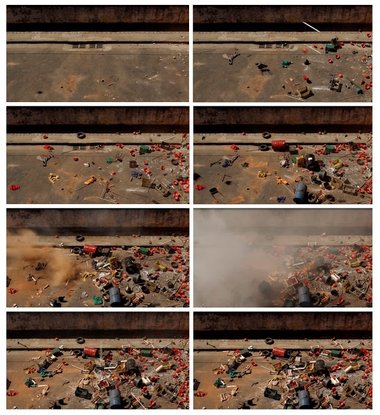
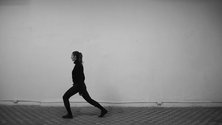

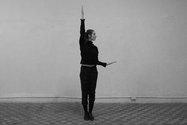
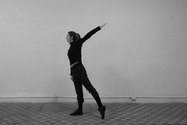
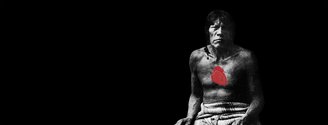
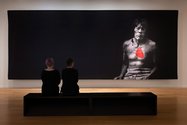
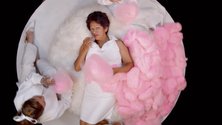
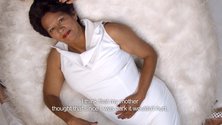
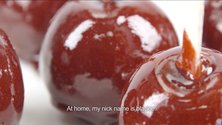
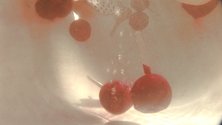
 Two Rooms presents a program of residencies and projects
Two Rooms presents a program of residencies and projects Advertising in this column
Advertising in this column



This Discussion has 0 comments.
Comment
Participate
Register to Participate.
Sign in
Sign in to an existing account.